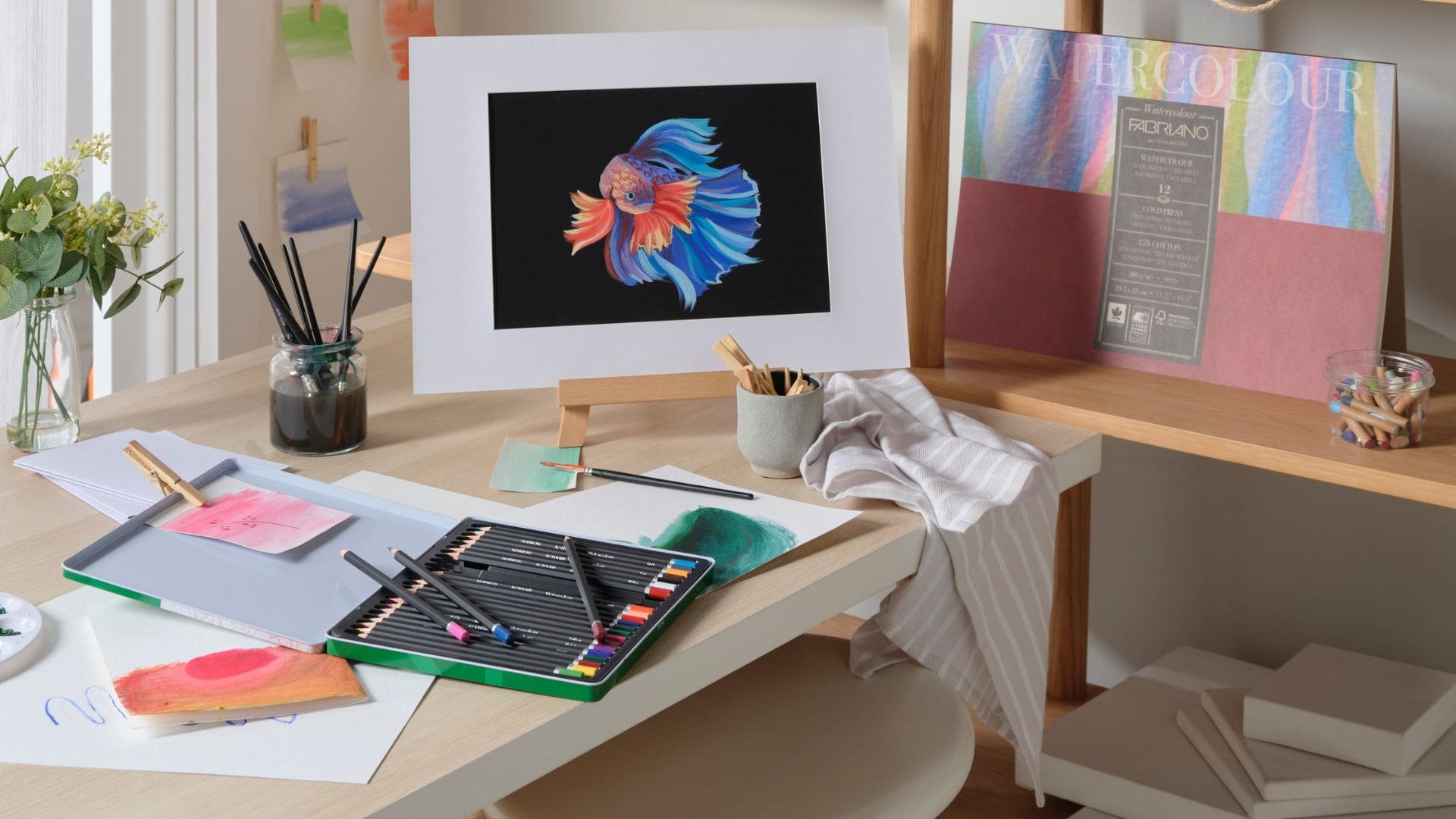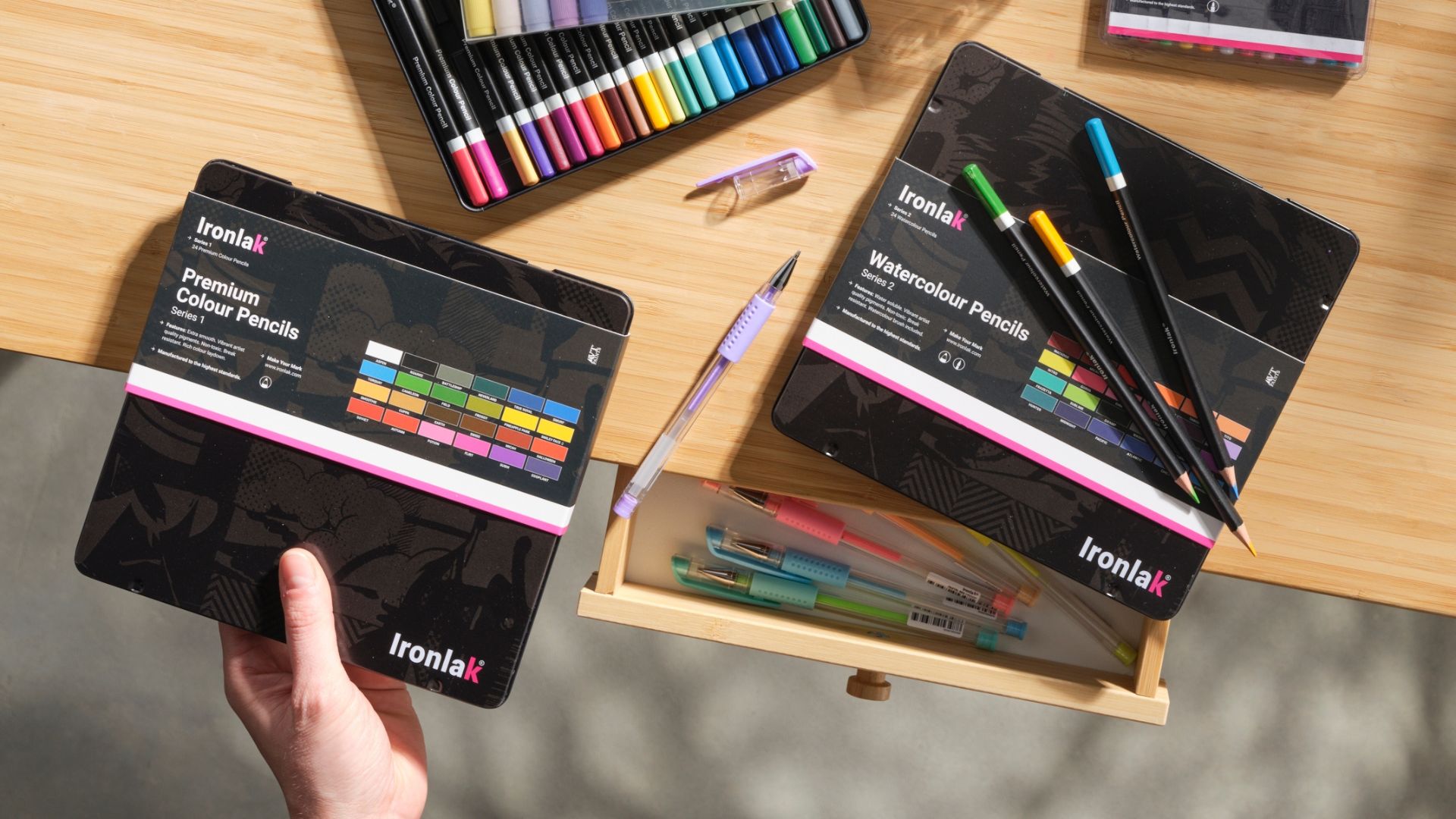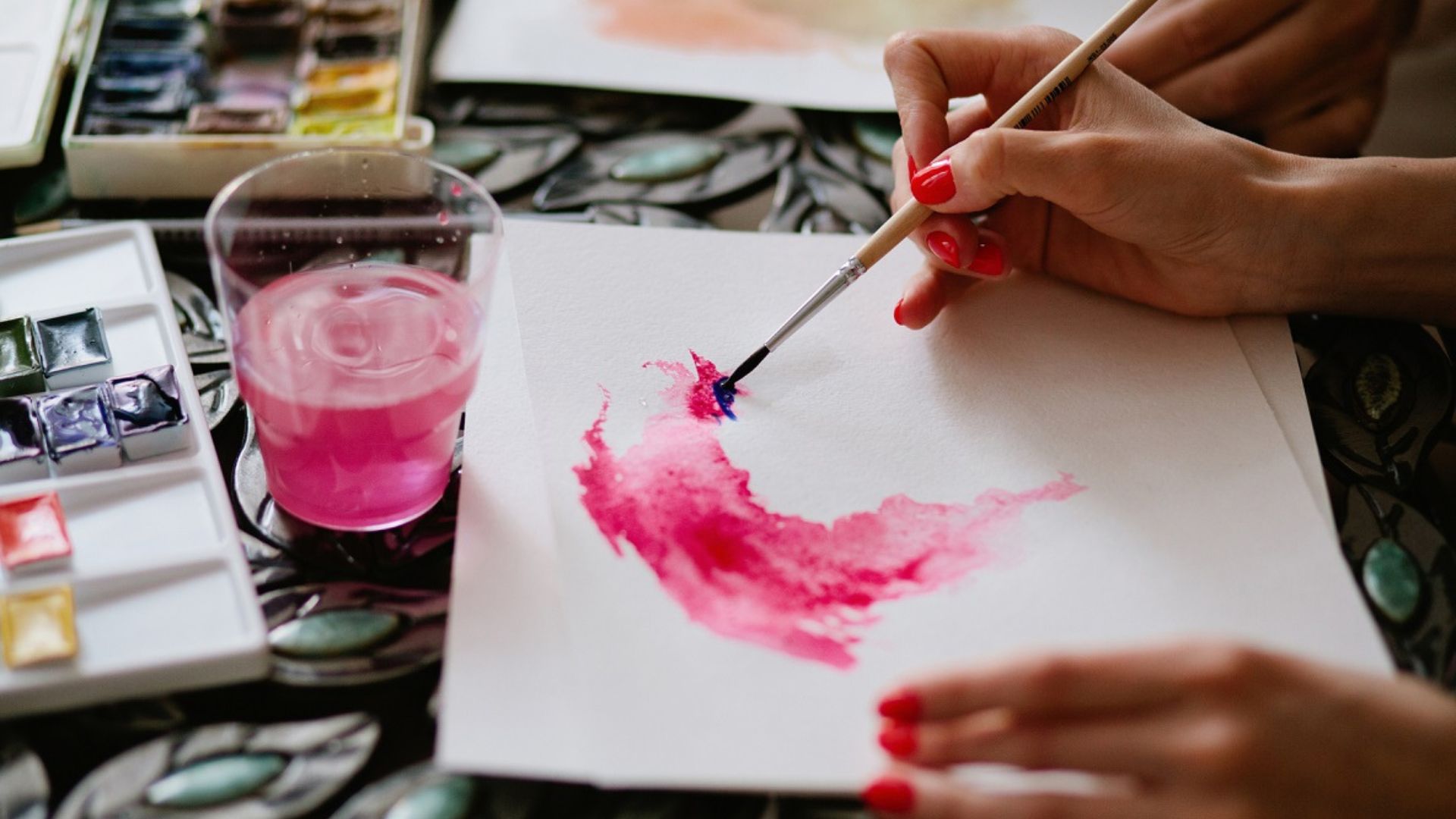 | ||
| Your browser is not supported. | ||
|
Please browse our site using any of the following options:
| ||
How To Get (Back) Into Art As An Adult

You'd be hard-pushed to find a kid who doesn't love mucking around with paints and coloured pencils. But for some reason, many of us lose touch with our inner artist, sometimes even before we reach double digits. It may be when the teacher tells us we have it wrong, and the sky isn't really a blue line at the top of the page. Maybe it doesn't seem like we're 'good enough', or one of those naturally arty people.
Kids are smart, though - painting and drawing is a huge amount of fun! Even if you haven't wielded a paintbrush since primary school, it's never too late to start again. At Spotlight we're big believers in rediscovering your artistic passions, no matter how much time has passed since you last lifted a coloured pencil or paintbrush! If our amazing range of art supplies isn't enough to tempt you back into the fold, then let us convince you - follow these easy steps to reignite your love for art as an adult.
Painting or Drawing?
To keep life simple, think about whether it's painting or drawing you're more interested in. There are dozens of different kinds of craft activities you could try, but the sheer number of them can make choosing one a bit intimidating! So let's stick to painting and drawing for now.
Drawing is a no-mess activity that you can sit down and start very quickly - there's no complicated setup or tricky supplies you need to procure. You'll need simple things like a sharpener, eraser, paper and pencils, none of which are overly expensive. Making professional-looking art is harder with pencils, but as a hobbyist? It can't be beaten.
Painting can be messy, but gives you bold and bright colours to play with and a much larger range of implements and additives to make special effects with. Painting needs more tools and accessories, but can be used to make more professional-looking artwork - and yes, as a beginner you too can make beautiful art at home!
Check out art galleries, look in books, trawl through Instagram or Pinterest and see what appeals to you. Once you've decided to give one or the other a go, that doesn't mean you're stuck with it forever - this is just a starting point so you don't get overwhelmed with possibilities. To see how some of our favourite artists got their start and discovered their passion, check out our creative files stories on Australian artists Jocelyn Proust and Kirsten Katz!
Learn From The Experts
Thanks to YouTube, you don't even have to step outside your own home to do an art class. Type in "Learn to draw", "How to paint with acrylics" or anything else you fancy, and you'll find no end of free tutorials. If you prefer face-to-face learning, seek out local amateur art classes - libraries, council community centres, art forums and local Facebook pages should be good sources of info.
At Spotlight we've also got our fair share of free art and craft tutorials you can take advantage of - make sure to look through our art and craft buying guides for an in-depth look into all the kinds of art and craft supplies you can find here, as well as our projects for heaps of step-by-step tutorials suitable for beginners.
Gather Your Supplies
Your teacher (online or IRL) should be able to give you a rundown of the essentials you'll need to get going. And even though you might have lost your will to paint as a kid, we're betting you still get a huge thrill out of new stationery - we definitely do!
If you're planning on drawing, buy yourself a nice sketchbook and only use it for your new hobby - no to-do lists or schedules allowed. Choose one that's small enough to keep with you at all times, so you can make art whenever the mood strikes. You'll also need some sketching and coloured pencils, a sharpener and an eraser.
If painting is your calling, grab yourself an art pad - it's like a sketchbook but with paper formulated to withstand the weight and water of paint. Choose your paints - acrylic is best for beginners, although watercolour is also lovely to paint with. Then grab some suitable paintbrushes and a palette to keep your paints in while you work.
Check out our full range of art supplies for everything you need to start drawing and painting!

Look For Inspiration
It's everywhere - and it's completely personal to you. Be open, look around and think about what really holds your interest. You might find things in nature or on the street, in movies or from your own emotions and memories. Record these (in words, sketches or snaps) for future reference. You never know where ideas will pop up - they can come from magazines, museums, social media, shop windows, music or even overheard conversations.
Use social media to explore the world of art online - you'll be able to draw inspiration from heaps of expert and amateur artists, as well as discover their own tips and tricks for choosing their next projects and finding inspiration.
Just Do It
As with any other pursuit, make time for your art and keep doing it. Otherwise, it's far too easy to let life get in the way. Sit down in your 'studio space' (your kitchen table or wherever you happen to be), pick up your paintbrush or pencil, let your mind run free and start experimenting. Don't worry too much about the outcome. Just get in there and do it!
If you find yourself letting your art projects lax, enlist your friends and family to help get you back on track. Friends can help pep you up and remind you to stay on track, while family can help you keep your home life structured and ensure you've got free time during the day to practice your drawing or painting.
Be Kind To Yourself
Let's be honest: your first artistic attempts are probably not going to be great. Don't let that stop you! As long as you keep at it, you'll see progress, which is exciting in itself. The main thing is not to judge yourself against anyone else, especially adults who've been painting forever - you're not much different from a kid who is just starting out. And don't let anyone tell you this time around that the sky isn't that wonky line at the top of the page. If that's what you want it to be, then that's what it is!
You might like to hold on to your first sketch or painting - keep it to compare to your later works so you can see how much you have improved.
See Where It Takes You
You may want to keep your art practice to yourself, and that's fine. Or perhaps you'll feel like sharing it with others via a local art group, life drawing class or by entering competitions. These are a great way to get some excellent feedback and helpful tips from people who have been in the exact same situation as you - everyone starts as a beginner, so they'll all have their own experiences to share.
You may even be able to turn your pastime into a money-spinner one day! Taking on commissions for friends and via social media is an easy way to start if you want to turn your hobby into a profitable side hustle. Consider making a separate Instagram or Pinterest page for your art, so you don't have to worry about potential customers coming across your personal details.
But for starters, aim to please yourself and don't worry too much about what other people think. Express yourself, make something you love, and enjoy the process along the way!

Rediscover Your Love For Art With Spotlight
Ready to start drawing or painting? Shop your supplies online, safely pay and Spotlight will deliver your order straight to your front door. You can also visit your nearest Spotlight store, where our friendly team will help you choose the best art supplies you need to get back into drawing or painting!
We've got plenty of blogs to help beginner artists find their footing - read our articles on how to draw a koala, creating an art toolkit, how to mix paint colours and how to choose a paintbrush. And for heaps of great art and craft projects you can try, browse our craft and painting projects online.




